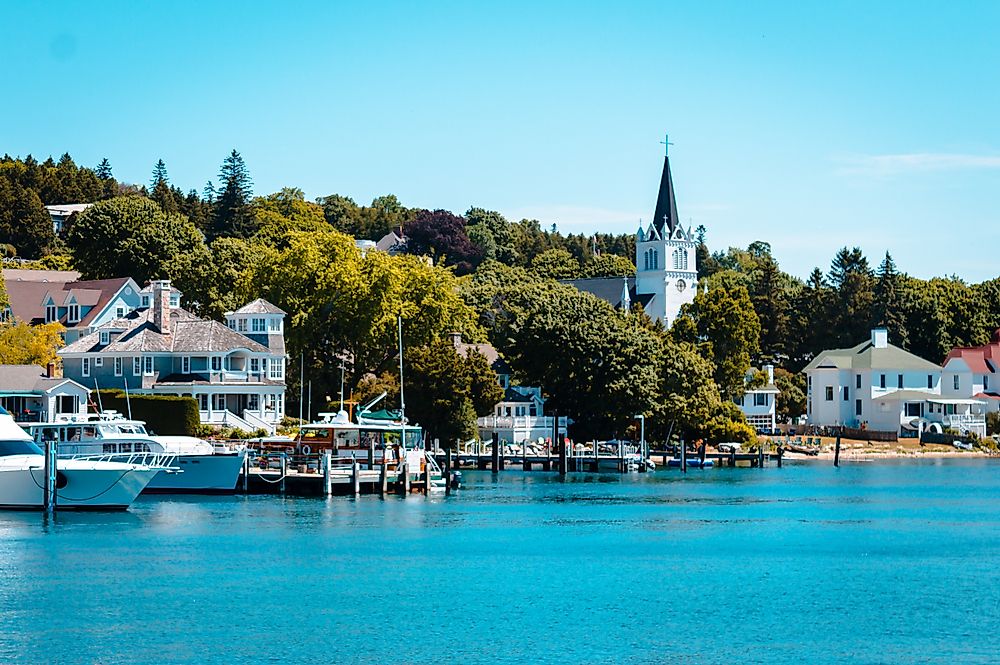Religious Beliefs In Michigan

The state of Michigan is in the Midwestern and Great Lakes region of the United States. It is the tenth most famous and the eleventh biggest state in the country. Michigan occupies a total area of about 96,713 square miles. It has a population of over ten million people, and its capital is Lansing. It is the only state with two peninsulas (the Upper and Lower Peninsulas). Michigan has over 64,980 ponds and lakes. Michigan has the longest freshwater coastline of any geopolitical division on earth, and it’s bounded by four out of the five great lakes and Lake St Clair. The Native American peoples were the first people to settle in Michigan before the French colonized the area during the seventeenth century.
Population Of Michigan
The estimated population of the state as at July 1, 2017, was 9,962,311 which is a 0.79% increase from 2010 when it was 9,883,635. Michigan has about 592,212 foreign-born residents. The state has the highest number of Macedonians, the Finnish and Dutch population in the United States. Over 78.9% of the population of Michigan is white. African-Americans make up 14.2% of the total population followed by Native Americans (0.6%), Asian Americans (2.4%) and other (1.5%).
The largest European American groups include Dutch (4.5%), Polish (8.2%), Irish (10.6%), British (8.5%) and Germans (19.5%). The African-Americans who migrated to Detroit and other northern cities during the twentieth century increased the black population in the state. Over 300,000 residents as of 2007 could trace their origin from the Middle East. Over 80% of the Japanese community in Michigan lived in Wayne, Washtenaw, Oakland, and Macomb counties as of 2015.
Religion In Michigan
Over 70% of the residents in the state are Christians with the largest denomination being the Roman Catholic Church which had over 1,717,296 members by 2010. The Roman Catholics denomination has six dioceses and one archdiocese in the state. These dioceses are in Detroit, Saginaw, Marquette, Lansing, Kalamazoo, Grand Rapids and Gaylord. They were the only organized religion in the state until the nineteenth century. The second-oldest Roman Catholic parish in the country is the Antoine de la Mothe Cadillac which was built in 1701 in Detroit. When Michigan gained statehood, the border of the Diocese of Detroit was redrawn to match that of the state.
The largest Protestant denomination by 2010 was the United Methodist with over 228,521 adherents followed by the Evangelical-Lutheran Church and the LCMS (Lutheran Church-Missouri Synod). Michigan had over 120,351 Muslims and 44,382 Jews by 2010. The Scandinavian and German immigrants introduced the Lutheran Church in Michigan, and it is the second largest denomination in Michigan. Twelve German Jewish families established the first synagogue known as Temple Beth El in 1850. The Calvinism doctrine was introduced by the Dutch who fled from the Netherlands in 1850 to avoid persecution. The immigrants from the Near East brought Islam into the state during the twentieth century, and currently, the largest mosque in the continent is in Michigan. The SDA (Seventh Day Adventist Church) began in Michigan on May 21, 1863.
Religious Demographics in Michigan
| Rank | Religion | Population (%) |
|---|---|---|
| 1 | Protestant | 51 |
| 2 | Unaffiliated | 24 |
| 3 | Roman Catholic | 18 |
| 4 | Jehovah's Witnesses | 1 |
| 5 | Other Christianity | 1 |
| 6 | Jewish | 1 |
| 7 | Buddhism | 1 |
| 8 | Islam | 1 |
| 9 | Other | 1 |
| 10 | No Answer | 1 |
| 11 | Mormon | 0.5 |
| 12 | Orthodox | 0.5 |
| 13 | Hinduism | 0.5 |











